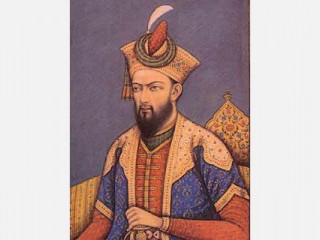
Aurangzeb biography
Date of birth : 1618-10-24
Date of death : 1707-02-20
Birthplace : Dohad, India
Nationality : Indian
Category : Historian personalities
Last modified : 2011-01-03
Credited as : Emperor of India, one of "Great Moguls",
Aurangzeb was the sixth Mogul emperor of India and the last of the "Great Moguls." He extended the Mogul Empire to its farthest boundaries, but his reign was harsh and marked by revolts.
Mohi-ud-din Mohammed Aurangzeb was born on Oct. 24, 1618, at Dohad and was the third son of Emperor Shah Jahan. At the age of 18 Aurangzeb became viceroy of the Deccan. In 1645 he became governor of Gujarat, the empire's richest province. Two years later he led an expeditionary force against the Uzbegs in Central Asia but was unsuccessful in establishing Mogul authority over Balkh (now northern Afghanistan). An expedition against Kandahar also failed.
In 1653 he returned to the Deccan to restore law and order and extended to the south the Mogul revenue system that had been established in northern India by Emperor Akbar. During this second viceroyalty his relations with his eldest brother, Dara Shukoh, who was Emperor Shah Jahan's principal adviser, deteriorated. Aurangzeb believed in territorial expansion and Moslem orthodoxy; Dara stood for imperial consolidation and a secular empire. Thus a clash for succession became inevitable.
When Shah Jahan fell ill in September 1657, Aurangzeb challenged Dara, defeated him, imprisoned their father, and assumed imperial authority on July 21, 1658. After liquidating his three brothers, he crowned himself emperor of India, assuming the title Alamgir (Conqueror of the World) on June 5, 1659.
Committed to making India an orthodox Moslem state, Aurangzeb restricted Hindu festivals and destroyed many Hindu temples. In 1664 the practice of sati (immolation of widows on funeral pyres) was enjoined. Poll tax on Hindus was imposed in 1679. Censors were appointed to enforce morals, and edicts were issued against drinking, gambling, prostitution, and narcotics. When a defiant Sikh guru, Tegh Bahadur, refused to embrace Islam, he was executed. Employment of non-Moslems was restricted in the imperial bureaucracy.
Such discriminatory policies naturally led to rebellions. In 1660 the Marathas began a revolt, followed by the Jats in 1669, the Satnamis in 1672, the Sikhs in 1675, and the Rajputs in 1679. Even the English East India Company took up arms against him in 1686. One by one all these revolts were subdued, but the victories were always short-lived. Mogul imperial unity was lost, and the treasury was exhausted.
Under Aurangzeb's piety and austerity, Mogul culture also suffered. Music and arts lost royal patronage, and the position of women rapidly declined. The Emperor strove to live up to the ideals of orthodox Islam. In his spare time he copied the Koran to provide for his funeral expenses. He was a man of literary tastes, and his own letters are a model of elegant Persian prose. At the age of 90, with all his faculties, except hearing, unimpaired, he died on Feb. 20, 1707. He is buried in Daulatabad.
Two works by the principal authority on Aurangzeb, Jadunath Sarkarn, are History of Aurangzib: Mainly Based on Persian Sources (5 vols., 1912-1924; rev. ed, 1 vol., 1925) and A Short History of Aurangzib 1618-1707 (1930; rev. ed. 1954). Chapters on Aurangzeb are in W. H. Moreland and Atul Chandra Chatterjee, A Short History of India (1936; 3d ed. 1953); J. C. Powell-Price, A History of India (1955); S. M. Ikram, Muslim Civilization in India, edited by Ainslie T. Embree (1964); and Bamber Gascoigne, The Great Moghuls (1971), which also deals with the first five Mogul emperors of India.
















